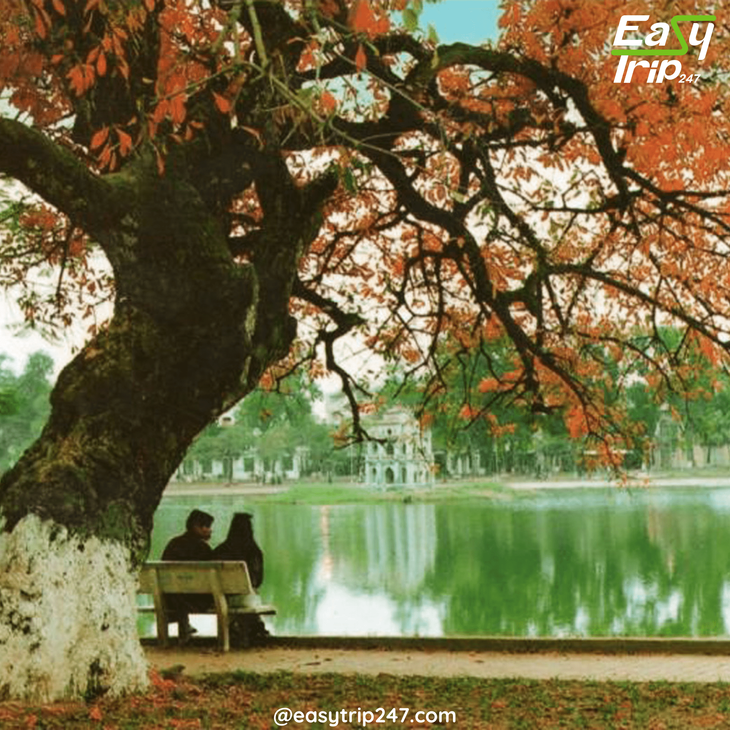Exploring Vietnam During the Dry Season: Pros and Cons
On
23/06/2025Reading time:
1 min
Summary:
When planning a trip to Vietnam, one of the most important considerations is timing your visit to experience the best of what this beautiful country has to offer. If you’re looking to enjoy optimal weather, clear skies, and fewer disruptions from rain, the dry season is undoubtedly the best time to visit Vietnam.

Understanding Vietnam's Dry Season
Vietnam's climate varies greatly depending on the region, with three main areas—northern, central, and southern—each experiencing slightly different weather patterns. The best time to visit Vietnam for many tourists is during the dry season, which occurs from November to April. This period is marked by clear skies, lower humidity, and pleasant temperatures, making it the ideal time for outdoor activities. In the northern region, cities like Hanoi and Sapa experience cool weather, perfect for trekking and exploring the natural beauty of the landscapes. In the central region, cities like Hue, Da Nang, and Hoi An benefit from sunny, warm weather, making it an excellent time to explore historical sites, relax at the beach, and enjoy local culture. Meanwhile, the southern region, including Ho Chi Minh City and the Mekong Delta, experiences warmer, drier temperatures—ideal for sightseeing and outdoor activities like boat rides.
Pros of Visiting Vietnam During the Dry Season
1. Favorable Weather Conditions
Arguably the biggest advantage of visiting Vietnam during the dry season is the pleasant weather. With significantly reduced rainfall, you can enjoy clear skies, cool evenings, and sunny days that make it the best time to visit Vietnam for sightseeing and outdoor adventures. Whether you’re wandering through the ancient streets of Hoi An, visiting the UNESCO World Heritage site of My Son, or cruising on the tranquil waters of Halong Bay, the dry season allows for uninterrupted exploration. For nature lovers, trekking through the lush mountains of Sapa is more enjoyable when the weather is dry, making it easier to navigate and appreciate the breathtaking views. Additionally, the absence of constant rain makes it easier to plan activities without worrying about cancellations or changes due to poor weather.
2. Great for Beach Lovers
Vietnam is home to some of Southeast Asia’s most stunning beaches, and the dry season is the perfect time to experience them. The coastal areas of Vietnam, such as Phu Quoc, Mui Ne, and Nha Trang, offer clear waters and warm temperatures, ideal for swimming, sunbathing, and water sports. With fewer rainy days, beach destinations are at their best, allowing travelers to fully immerse themselves in the coastal beauty of Vietnam. The best time to visit Vietnam for beach lovers is definitely during the dry season, as you can enjoy uninterrupted days by the sea. Whether you’re diving into the waters of Nha Trang or simply relaxing on a quiet beach in Phu Quoc, you’ll find the dry season to be the most ideal period to experience Vietnam’s beach paradise.
3. Perfect for Outdoor Activities
The dry season offers the best time to visit Vietnam for outdoor enthusiasts. From trekking to cycling and exploring remote villages, the dry weather provides optimal conditions for physical activities. In northern Vietnam, the cool temperatures make trekking through the rice terraces of Sapa a memorable experience. With fewer chances of rain and less humidity, hiking is more comfortable, allowing you to fully enjoy the scenic beauty of this region. Likewise, exploring the Mekong Delta by boat or cycling through the lush countryside of central Vietnam is made all the more pleasant with dry, sunny weather. The dry season also opens up more opportunities for exploring national parks such as Phong Nha-Kẻ Bàng, where trekking and cave exploration are at their peak.
4. Ideal for Festivals and Cultural Events
One of the most exciting aspects of visiting Vietnam during the dry season is the abundance of cultural festivals and events that take place. The best time to visit Vietnam for cultural experiences is often aligned with major celebrations like the Lunar New Year (Tet) festival, which usually occurs in January or February. Tet is Vietnam's most significant holiday, and it offers visitors the chance to witness traditional ceremonies, lion dances, fireworks, and festive markets. The dry season also hosts various regional festivals, including the Hue Festival, the Mid-Autumn Festival, and the Hoi An Lantern Festival. These events provide an excellent opportunity to immerse yourself in the local culture, experience Vietnam’s traditions firsthand, and make lasting memories.
5. Fewer Pests and Mosquitoes
In the wet season, the tropical climate of Vietnam makes it a prime breeding ground for mosquitoes and other pests. However, during the dry season, there’s a noticeable reduction in these pesky creatures, making outdoor activities more comfortable. This is especially beneficial for travelers who plan to spend time in rural or tropical regions, such as the Mekong Delta or the Central Highlands. The lack of mosquitoes during the dry months makes it the best time to visit Vietnam if you want to enjoy your trip without constant concerns about insect bites or mosquito-borne diseases.
Cons of Visiting Vietnam During the Dry Season
1. Higher Tourist Crowds
As the best time to visit Vietnam for optimal weather, the dry season also attracts a larger number of tourists. From popular destinations like Hanoi, Halong Bay, and Hue to the idyllic beaches of Phu Quoc, many of Vietnam’s top attractions see a significant increase in visitors during this time. This can result in crowded attractions, longer lines, and higher prices for accommodations and tours. If you prefer a more peaceful and secluded experience, the dry season may not be the best time for you to visit popular tourist hotspots. However, with some careful planning and booking in advance, it’s still possible to enjoy a more tranquil experience, especially if you venture off the beaten path to lesser-known destinations.
2. Higher Prices for Accommodations and Flights
Because the dry season is peak tourist season in Vietnam, travel costs can be higher. Whether it’s booking a flight to Hanoi or securing a beachfront hotel in Nha Trang, you may find that accommodation prices are elevated during this period. Similarly, airfare costs tend to be higher during the dry season, especially during major holidays like Tet. For budget-conscious travelers, this might be a factor to consider when planning your trip. While it’s possible to find deals, you may need to book well in advance to secure the best rates and avoid price hikes.
3. Warmer Temperatures in the South
Although the dry season is known for pleasant weather, the southern part of Vietnam can experience high temperatures, especially from March to April. Cities like Ho Chi Minh City, Vung Tau, and the Mekong Delta can become quite hot, with temperatures reaching up to 35°C (95°F) or higher. While the dry weather is perfect for outdoor exploration, the heat can make midday activities a bit uncomfortable for those not accustomed to the tropical climate. To make the most of your trip during this time, it’s advisable to plan your outdoor activities for the early morning or late afternoon when temperatures are more bearable.
4. Dust and Drought in Certain Regions
In certain areas of Vietnam, particularly in the central and southern regions, the dry season can bring about drought conditions. While this can mean more stable weather, it can also lead to dustier environments, particularly in rural or mountainous areas. For travelers embarking on long treks or bike rides, the dry conditions can sometimes cause discomfort, especially when combined with high temperatures. Additionally, the lack of rain can lead to less vibrant landscapes, particularly in agricultural regions that depend on water for their crops. If you’re planning to visit these areas during the dry season, be prepared for dusty conditions and make sure to bring plenty of water and sunscreen to stay comfortable.
Conclusion
Visiting Vietnam during the dry season has its advantages and disadvantages, but for many, it remains the best time to visit Vietnam. The dry season offers travelers the perfect weather for outdoor activities, sightseeing, and cultural experiences, with sunny days and cooler temperatures in the north. The opportunity to explore the beaches, trek through mountains, and immerse yourself in the local festivals makes it an unforgettable experience. However, it’s important to keep in mind the potential downsides, such as higher tourist crowds, increased prices, and the warmer temperatures in the south. By planning your trip thoughtfully and considering your preferences, you can make the most of your visit to Vietnam during this ideal season. Ultimately, the dry season offers the best time to visit Vietnam for those seeking an enjoyable, active, and culturally rich journey.
Design Your Tour Today And Get A Quote. Contact Us Here: +84.975.504.825
Source: Easytrip247 Team compiled.
